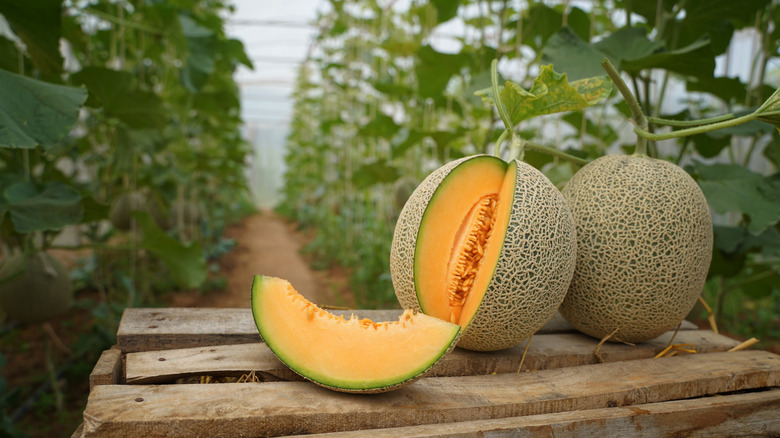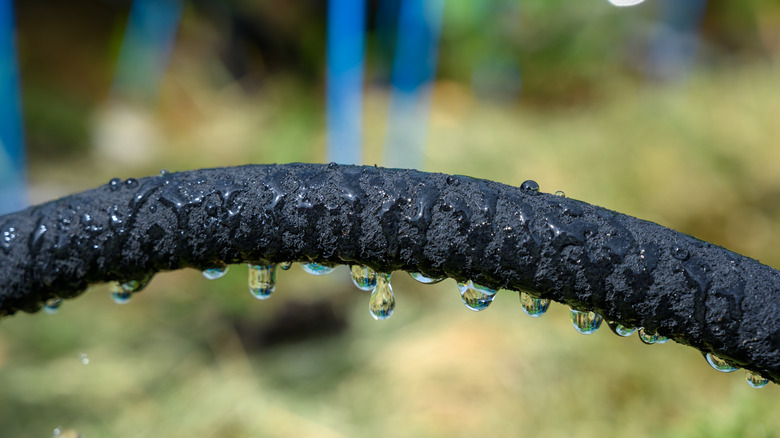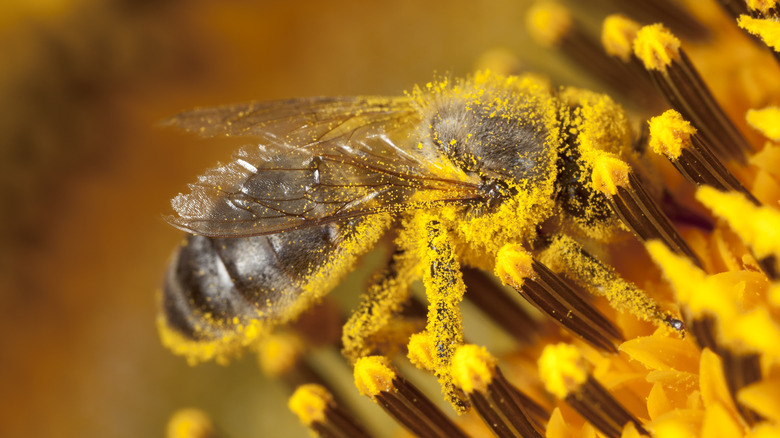Tips And Tricks To Grow Juicy Cantaloupe From Seeds In Your Garden
Watermelon is hailed as the fruit of the summer, but its cantaloupe counterpart shouldn't be overlooked. They're easy to grow and sweet as can be with the right tips. Growing your juiciest cantaloupe crop actually starts with testing your soil, proper watering techniques, and sufficient pollination. A soil test will tell you what nutrients your soil contains and lacks. This includes macronutrients like nitrogen, potassium, and phosphorus or micronutrients like magnesium, sulfur, and zinc.
Testing your soil is key to growing the best cantaloupe crop because having optimal soil nutrients from the start prevents nutrient deficiencies that can stunt growth or make your cantaloupe vulnerable to disease when it matures. In some cases, a soil test can also provide your soil's pH level. Soil pH refers to how acidic or alkaline the soil environment is. The scale ranges from extremely acidic to extremely alkaline — 0 to 14 respectively, with 7 considered neutral.
While the optimal pH varies by plant, the ideal soil pH for cantaloupes is 6.0 to 6.5. A popular way to conduct a soil test is by purchasing a kit from garden centers. Another option is to collect samples and send them to an agricultural lab or make DIY tests to check the health of your soil. If your soil test concludes that your soil lacks nutrients, consider replenishing them with organic compost or a basic liquid fertilizer. Avoid adding too much nitrogen fertilizer as this may reduce fruit growth.
Watering methods for cantaloupes
Now that your soil is in better shape, you're ready to plant! If starting cantaloupes from seeds, plant in a sunny location at 1 inch deep. Once seeds are planted, focus on proper watering techniques as the plants mature. This ensures that your melons are moist and flavorful. As seeds sprout, water them consistently to keep the soil from drying. When sprouts become plants, they'll need about 2 inches per square foot of water every week. Increase watering frequency as the plants develop fruit, but reduce watering during the last week of fruit setting to ensure the melons taste sweet when ripe for harvest.
It should be mentioned that watering methods matter, too, and there are some mistakes to avoid when watering. For cantaloupes, water the soil directly, avoiding the foliage. Doing so will prevent the leaves from developing diseases like anthracnose, which is a type of fungal disease characterized by large, tan spots on the surface of a cantaloupe leaf.
Attracting pollinators to your cantaloupe
Additionally, low fruit production in cantaloupes can be attributed to improper pollination. Therefore, learning how to bring more pollinators to your yard and cantaloupe crop is essential for an abundant harvest of healthy melons. The more your plants' female flowers are pollinated, the more fruit they will set. Attracting pollinators can be as simple as planting native and flowering plants near your cantaloupes.
Sunflowers are a popular pollinator-friendly blossom that is also known to be companion plants to cantaloupes. Companion planting prioritizes growing plants that enhance production near one another. Sunflowers will attract plenty of bees to pollinate cantaloupe flowers.
However, if the thought of attracting pollinators to your garden is too much pressure, you can also consider pollinating the cantaloupe flowers yourself. This method is called hand-pollinating and is easier to do than you might think. You simply use an object like a Q-tip to take the pollen from a male flower and transfer it inside a female flower. By following these techniques, you're sure to have a sweet and juicy cantaloupe crop by the end of your growing season.


